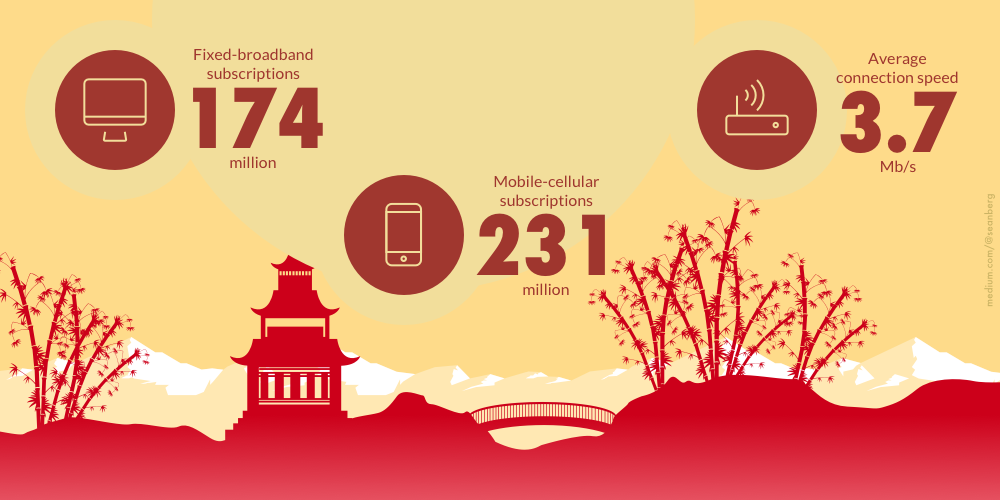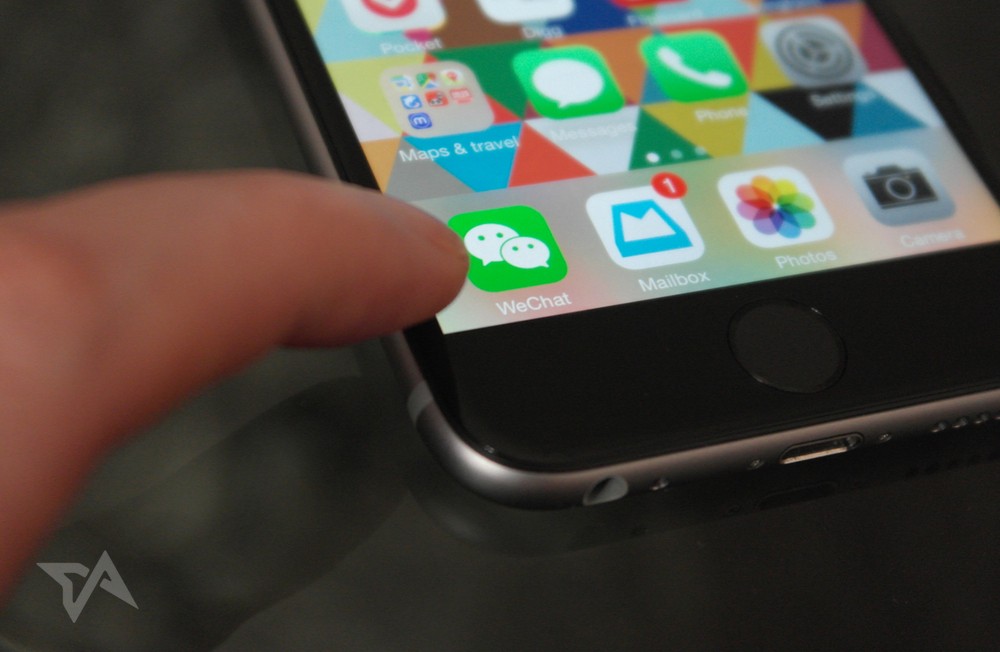Recently I worked on a mobile app project geared towards the Chinese market. As I had little to no knowledge on the subject, I did some extensive research. While most of the text below is copy/paste from several sources (listed at the end), I think the structure of the text might still be comprehensible. Enjoy!
Typography
Traditionally, the Chinese writing is from right to left, top to bottom. But in the modern world, books are printed from left to right, horizontally — like in the western world. The same goes for websites and apps. So the reading direction is the same as the way you’re reading now. But even then, why does it seem like Chinese apps look messy and overcrowded when you take into account only text?
The Chinese characters are divided into strokes but the number of them can vary between 1 and 60 strokes, making them appear very complex and detailed. Adding to the fact that there are over 8,000 simplified Chinese characters, no capital letters, and no space between characters, apps seem more intense as there is much less breathing room. But for the Chinese, that’s no problem; after all, minimalism isn’t very popular in Asia.
A few other interesting tidbits about Chinese typography:
- Characters are usually square and monospaced
- Bold and italic doesn’t exist
- Text is justified to make reading easier (which is essential as there’s no spacing between characters)
- Font size shouldn’t be less than 12px because of legibility issues
- Websites divide the area available into many smaller cells or content blocks in order to improve the readability

Internet Access
Despite being the leading country in fixed broadband subscriptions (174M), it falls into second place when talking about mobile-cellular subscriptions even though there are 57M more mobile users then there are desktop users. This means most Chinese (58% of the population) access the web via smartphones, and the devices are mostly from local companies (such as Xiaomi, LeEco and Huawei) but also has a significant representation from the South Korean Samsung with their Galaxy S7 device, and a dwindling representation from Apple’s iPhone (whose sales have fallen 12 percent in Greater China).
But the internet infrastructure in China is not the best — out of a top 55 countries, it’s the 11th slowest in terms of average connection speed.

Website Links
Something most people notice on Chinese websites is the amount of links. Yet this is something that annoys them as much as it would annoy us. The link system is not comfortable for netizens because they can be lost due to the exaggerated quantity of content and links. To avoid this issue, they use the search box and skip the home page.
But if the Chinese dislike huge amounts of links on their sites do they still design them that way? The simple answer is “culture”. I’ll talk about that further on.
Another thing that is annoying to us Westerners but is reflective of Chinese’s browsing behaviour is the fact that all links always open new tabs in your browser. Users tend to look at one tab while the other loads, and the reason for this is simple: the slow internet connection speeds.
Cultural curiosities
Numbers
Apple Stores in China have price tags ending in 8 instead of 9. In the Chinese language, 8 sounds very similar to the word meaning “make a fortune.” As a result, Chinese people often try to make connections with the number 8, like getting it in their phone number and so on.
Login Identifier
Most websites in China use a mobile phone number instead of an email address as the primary identifier for logging in and as the primary password-recovery tool — particularly relevant since email doesn’t have nearly the saturation in China that it does in the West.
QR Codes
For certain Chinese digital wallets that let users scan a QR code to instantly pay for anything from a city cab ride to a fancy dinner to a pay-per-view movie, payment is a single step. They don’t even require password input or verification for purchases under 300 Chinese yuan (CNY) or so (around $50 USD). That being the case, a stolen phone is just as bad as a stolen pocketbook.
Reason for Shopping
Chinese shoppers spend more to be seen. One reason why Chinese shoppers do this is because they shop for social recognition, and foreign brands are regarded as premium goods in China. Another reason is the high tariffs for luxury goods in China, which, for example, makes buying a COACH handbag much more expensive at home than in the US or Europe. An interesting tidbit of information I’ve learnt is that Chinese don’t really like the action of shopping (i.e. walking in a store, browsing, selecting what they want), rather prefer simply purchasing an item they have in mind. In many cases, they simple walk in a store with a picture of what they want, get it, pay for it and leave.
Light Apps
Chinese companies are building light apps. Light apps are one-off, zero-download, hyper-targeted mini-sites that are typically built (and often animated) with HTML5. They’re often single-page, single-message and intended to be single-use. In other words, users would open a light app once, flip through it, ideally pass it on to friends via mobile sharing, and then never look at it again.
Sharing
Users are most often urged only to share — direct or obvious links to monetization are rare. But unlike most Western mobile sharing functions, which typically give users the choice to share on any one of their preferred social platforms, Chinese light apps only bother pressing users to share on a single network: one that’s frequented by over 83% of China’s mobile Internet community but one that is largely undiscussed in the West — Tencent’s WeChat.
Launched in 2011, WeChat is a mobile-app-only network that combines the features of text messaging (voice and key input), group chat, a Facebook-like feed and timeline (called “Moments”), hookups for lonely folks (WeChat’s “Nearby” feature lists all users by physical distance from your location) and a whole lot of emojis. Perhaps of most interest to web designers and developers, it also has a native browser and offers an API for developers.

WeChat is so popular that light apps are nearly always optimised specifically for WeChat’s native browser, and “Share to WeChat Moments” is by and large the only call to action in a light app’s interface.
Scanning a desktop screen might sound bizarre, but it’s a common user behaviour in China. Again, because WeChat is everywhere, your basic QR code most typically links directly to a corporate WeChat account that users can follow, or to a light app that loads in WeChat’s native browser. QR codes provide an entry point to WeChat experiences that can be distributed via non-mobile media, such as print ads, business cards and website footers.
References
- Akamai’s “State of the Internet — Q3 2015 report (PDF)
- Top 10 Most Popular Smartphones Around the World 2016
- Chinese Standard Web Fonts: A Guide to CSS Font Family Declarations for Web Design in Simplified Chinese
- Designing for China
- How to Design for the Asian Market
- Notes on Designing Websites for the Asian Market
- 7 Must-Knows When Designing for China
- On China’s Bleeding Edge: Web Design Trends 2015
This article was originally published on Medium on February 17, 2017.